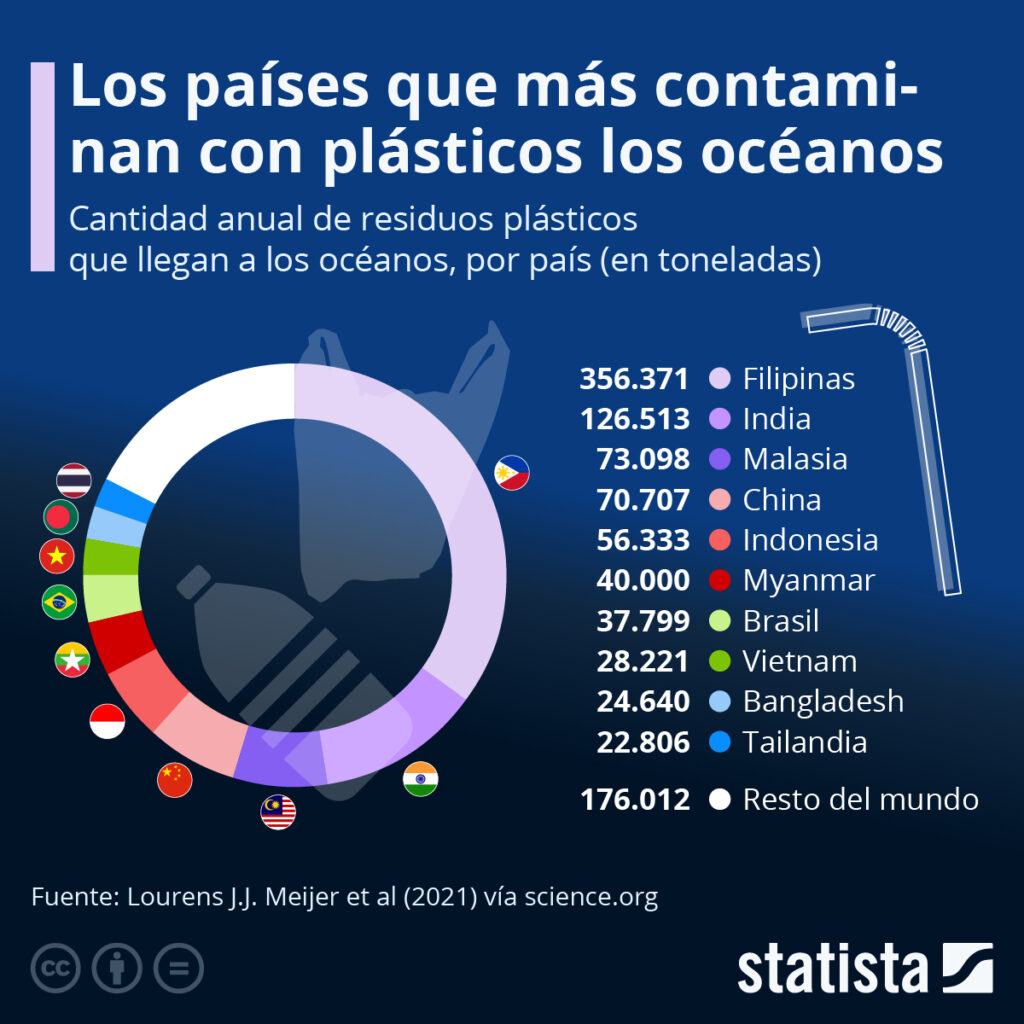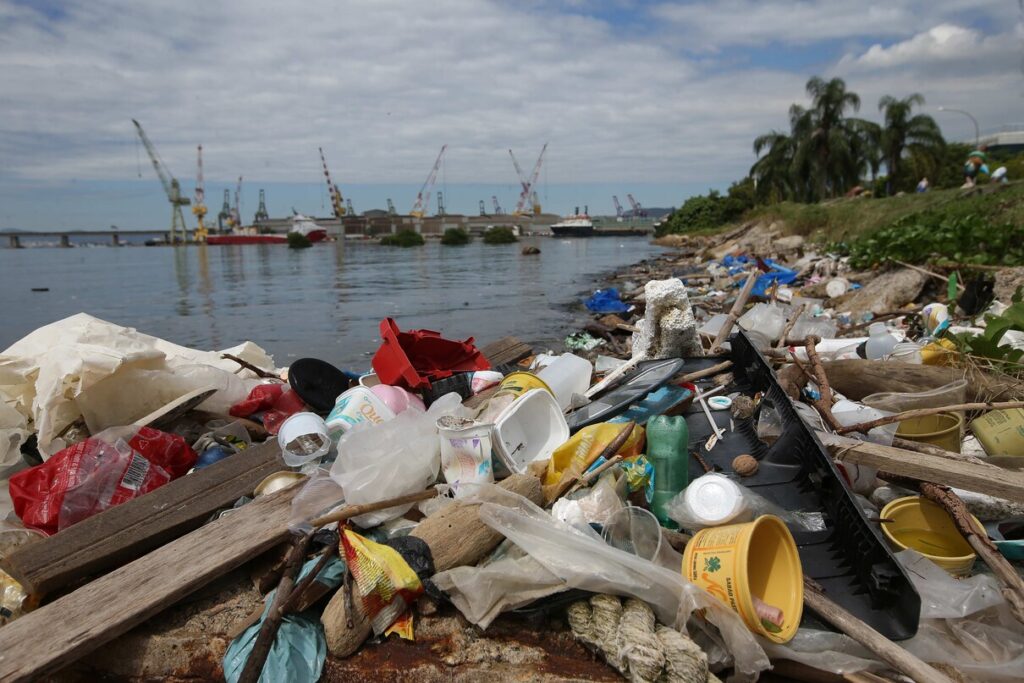Every year, the pollution of the oceans with plastics grows. Millions of tons are generated worldwide, as only a small part is recycled.
After their life cycle, half of these waste materials have a second life, they are incinerated or deposited in landfills, but a large part of the rest ends up in the seas. The problem is that they can take up to 500 years to degrade.
The majority comes from rivers, which receive waste from cities. In this regard, based on the research led by Lourens J.J. Meijer, Statista created a chart showing which countries pollute the most.
These are the countries that pollute the oceans the most with plastics

The chart shows the ten countries with the highest plastic pollution in the world.
According to the study, countries with small geographical areas, longer coasts, high rainfall, or deficient waste management systems are more likely to dump plastic into the ocean.
The authors of the study estimate that over 75% of the plastic accumulated in the oceans comes from the “mismanagement of waste” in Asian countries such as India, Malaysia, China, Indonesia, Myanmar, Vietnam, Bangladesh, Thailand, and the Philippines, which account for 35% of ocean plastic. The only non-Asian country among the top ten is Brazil.
Measures being taken to reverse the situation: the pending treaty
A global treaty against plastic pollution is possible. Although it has not yet been finalized, progress was made last year in this regard.
In November, in Busan, South Korea, more than 170 countries gathered for the fifth time to sign a legally binding global agreement to address this threat.
Plastic pollution is so widespread that it has been detected even in clouds, in the deepest ocean trenches, and in virtually every part of the human body, including the brain and breast milk.
Although everyone acknowledges the existence of the problem, opinions diverge radically on how to combat it.

Exemplary work: what is and how The Ocean Cleanup works
There are many global initiatives proposing solutions and working hard to combat this pollution. An example is The Ocean Cleanup.
It is a highly publicized non-profit organization with the ambition to clean up 90% of the oceans’ plastic. In reality, the effect of the initiative on the world’s floating garbage would be minimal, as reported by researchers in the Science of the Total Environment.
According to marine biogeochemist Matthias Egger from the organization, their cleaning device works like a “giant Pac-Man” and sweeps the trash using a screen attached to a floating barrier. The organization argues that it can use this device to remove half of the Pacific Garbage Patch —a large swirling mass of plastic waste— in five years.
Have you already visited our YouTube channel? Subscribe!

